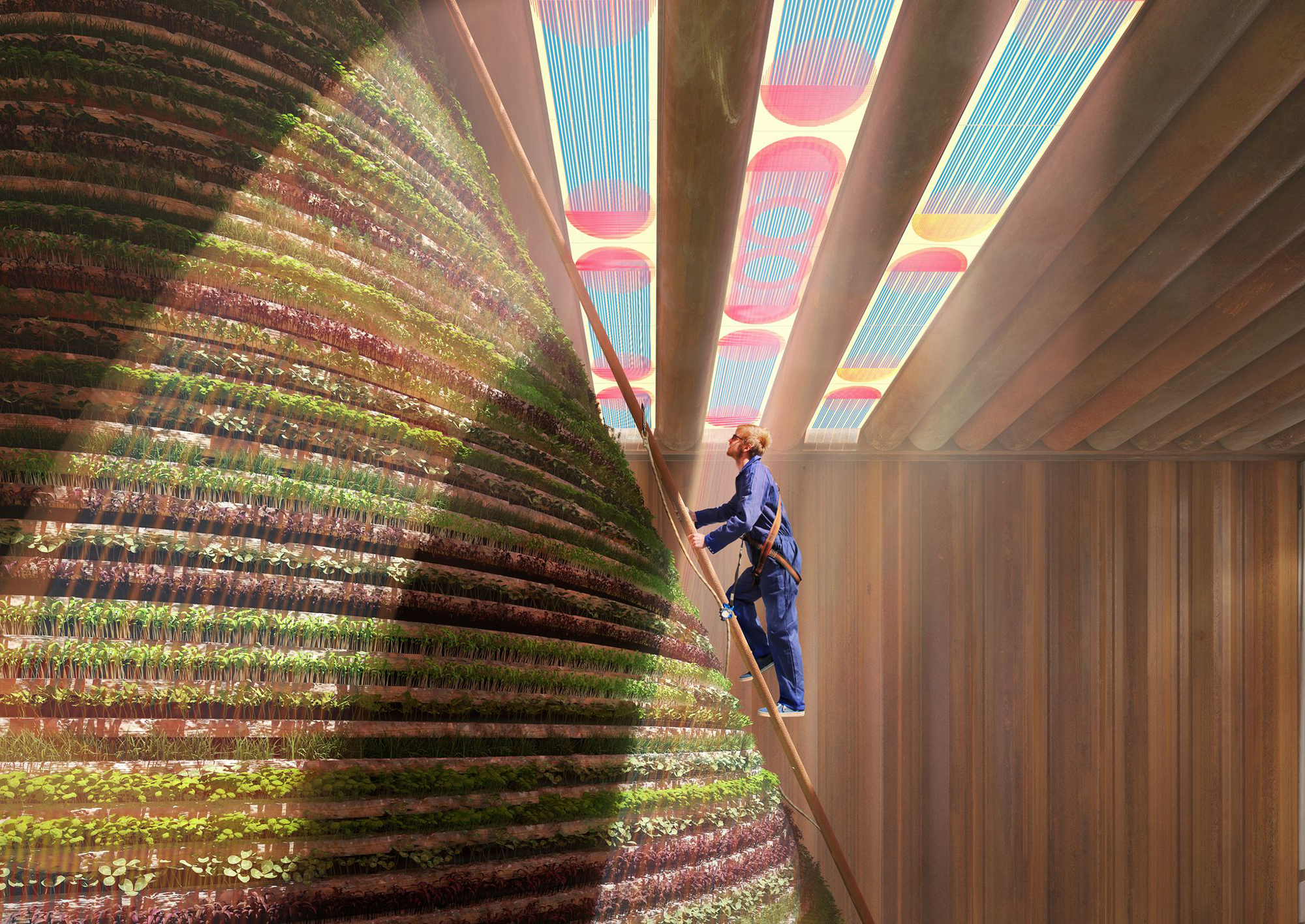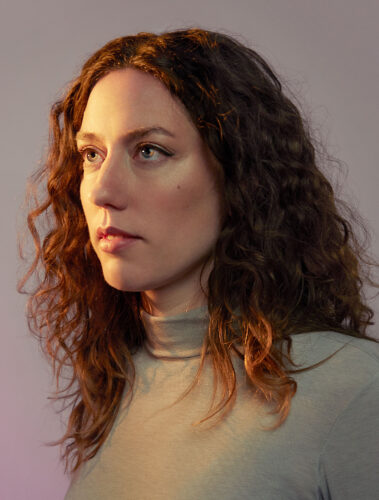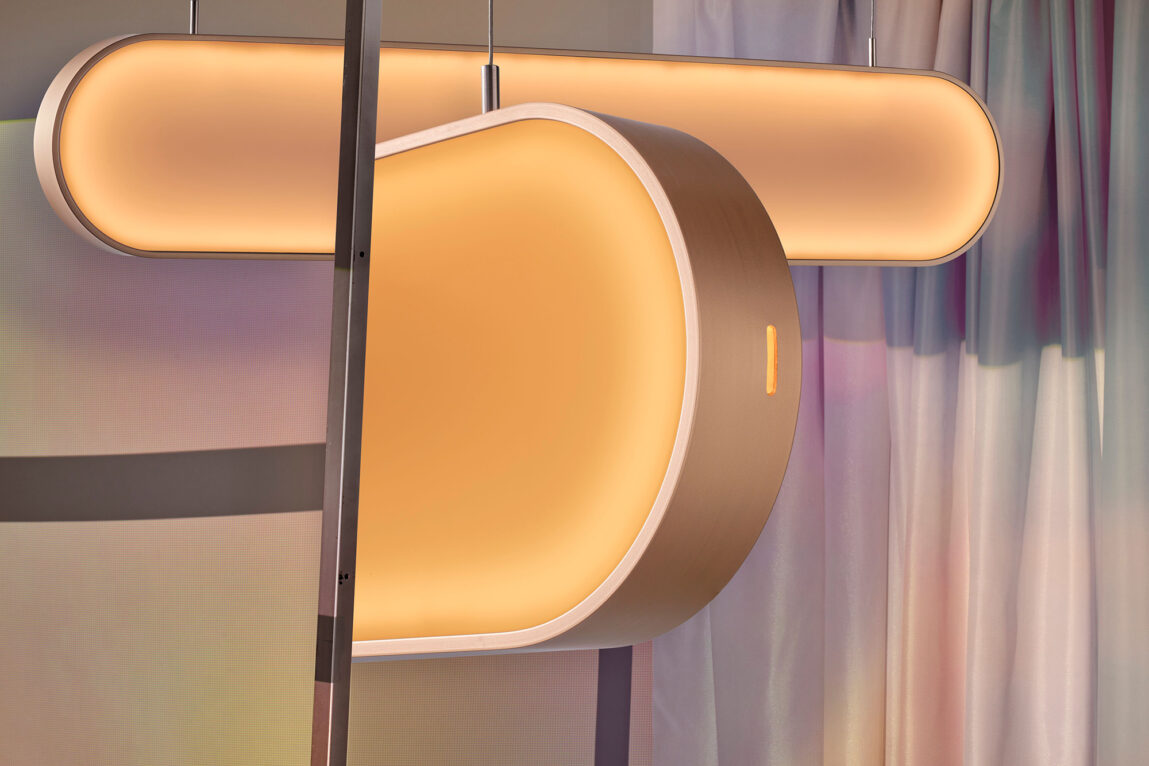Marjan van Aubels innovatives Solardesignstudio verbindet Nachhaltigkeit, Technologie und Design miteinander und schafft damit funktionale und elegante Lösungen für eine energieeffizientere Zukunft. Die nahtlose, ästhetische Integration von Solarenergie in Gebäuden oder Objekten zielt darauf ab, diese Form der Energiegewinnung für eine breite Masse attraktiv zu machen und somit zu einem selbstverständlichen Teil unseres täglichen Lebens werden zu lassen. Wir sprachen mit der Designerin über Ästhetik und Technologie, die Demokratisierung von Solarenergie und ihren Beitrag für die bevorstehende Expo 2020 in Dubai.
Chapter You frequently work with dye-sensitised solar cells. Can you tell us a little bit about this technology?
Marjan van Aubel Dye-sensitised solar cells are an invention by Michael Graetzel. While I was still a student at the Royal College of Art, I was able to work at his lab to produce these cells and learn everything about them, which was an amazing experience. The cells use the properties of colour to generate a current. A layer of titanium dioxide is printed between two sheets of glass that functions as a nanosponge layer for the dye. When a photon hits this sandwich, this triggers an electron and thus forms electricity.
Chapter What nurtured your fascination for solar design?
Marjan van Aubel I always wondered about the solar panels on rooftops – unappealing blue squares that stick out on the roof of a house and don’t really make your house look more beautiful. We live in an age in which we desperately need answers for our climate crisis. A few of the answers lie in front of us, but we don’t make use of them. Conventional energy sources play a big role in global warming, whereas solar energy can be a clean solution. The sun is all around us, almost everywhere on our planet, so why not use what we have in abundance and turn it into something useful that can bring us a step closer towards a more sustainable future. Everybody wants to live in beautiful surroundings, in public space but also at home and the offer of well-designed objects powered by the sun is small. Solar energy is still mostly connected to its technical aspects. Most people think of panels on roofs or of gigantic solar farms that are great to harvest energy, of course, but it would be even better to integrate solar in a beautiful way into our daily lives. We are surrounded by surfaces everywhere, so why not use them and design objects that add an emotional value.
Chapter In general, what would it take to make the majority of people switch to solar energy? How can solar energy be democratised?
Marjan van Aubel There are already initiatives by governments to subsidise solar energy, like the »100.000 rooftop program« in Germany that allowed citizens to install panels on the roof at a very low cost. This program was a great success and we see it in other countries too. However, not only by subsidising solar we can move towards a future in which solar becomes the major source of energy. If we integrate it into our daily lives, make it beautiful and accessible, we can democratise it on a large scale. We have to integrate it into the walls of our homes, tables, lamps, clothes and all kinds of surfaces. If solar is beautiful and if it adds value to daily life, people will want to have it. I think it would be great if in the future we would say that a house is broken if it can’t provide its own energy.
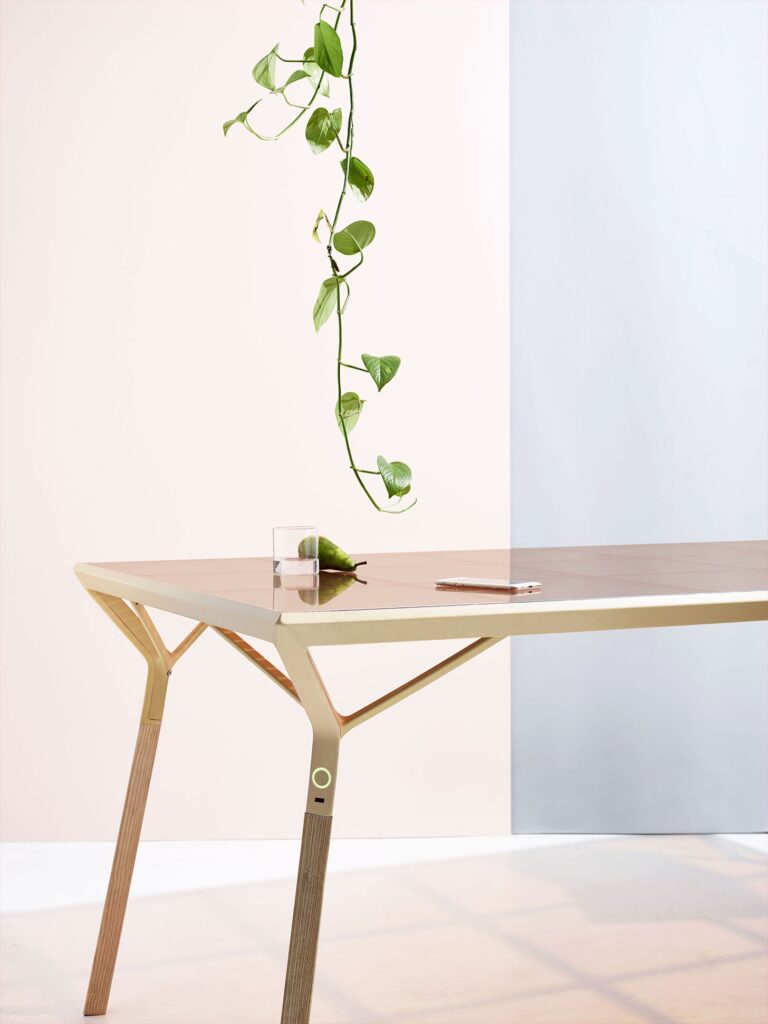
Chapter Can beautifully designed solar objects contribute towards a more sustainable life?
Marjan van Aubel Definitely! If objects are beautifully designed and easy to use, people will integrate them into their daily lives and use less conventional energy sources. Wouldn’t it be great to have furniture that doesn’t just look nice, but on which you can also charge your phone instead of plugging it into a socket? The objects and furniture become almost alive in a way and serve you in the house. I think it also nurtures curiosity for the sun, solar energy, light and the technology behind it and hence how nature works. It can become interactive and also satisfying to produce your own energy at home. Maybe that also makes people look at the world differently and makes them want to change their homes into big energy providers.
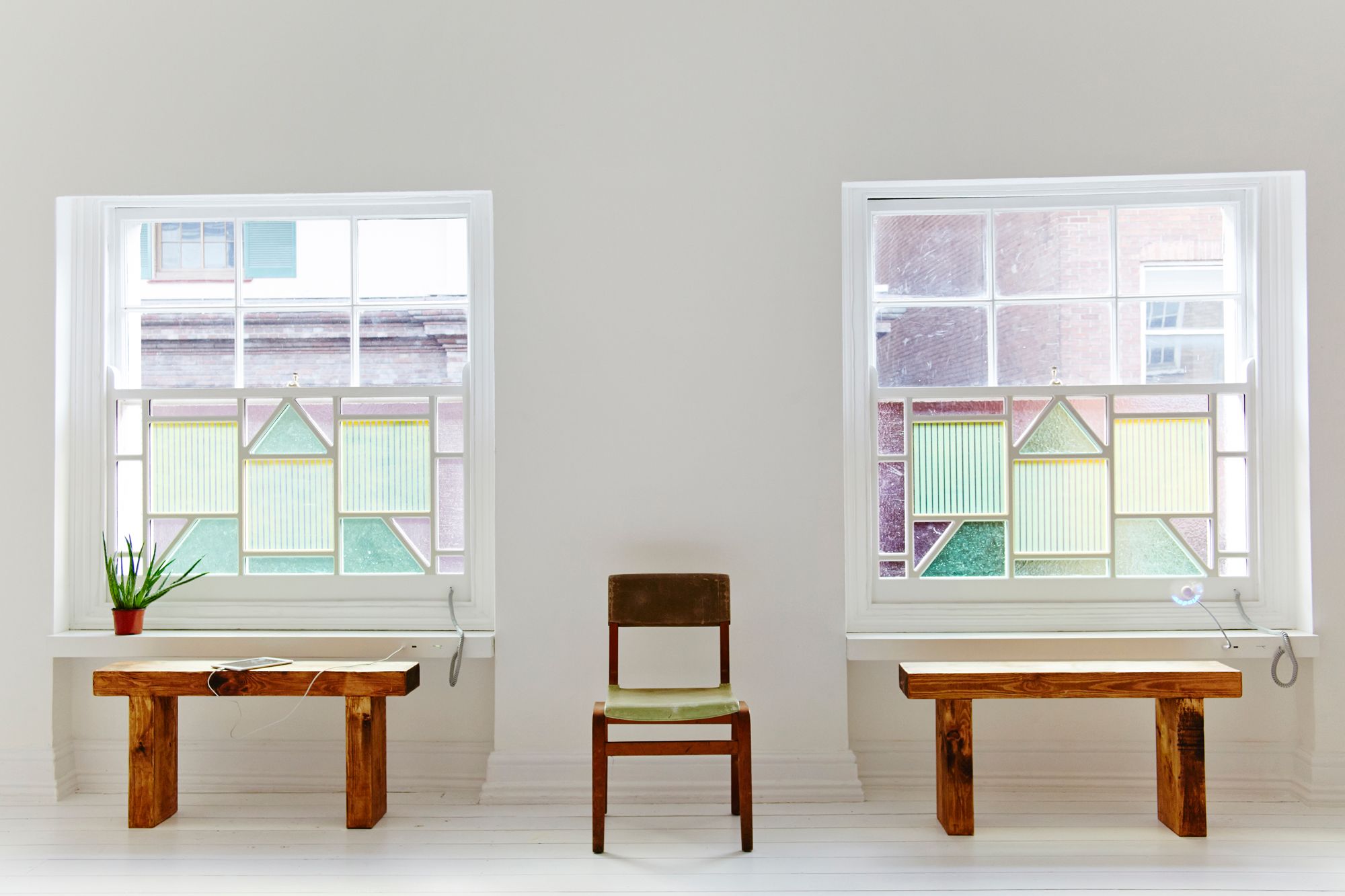
Chapter You have created windows, lamps and a table, among others, using solar technology. Can you share some insights on upcoming projects?
Marjan van Aubel Our latest project is Sunne – a solar light that brings the sun into your home. It’s a self-powered ambient lamp that can be installed in the window and brightens up the home at night. We started it as a Kickstarter project to see how interested people were in an autonomous lamp that harvests its own energy and were overwhelmed by the great success. Within 48 hours, we reached the funding goal. We finished the Kickstarter at more than 200 percent of our goal and already have many pre-orders coming in for the second version of Sunne. We are happy that the demand for Sunne and solar-powered objects is that high and are now in the middle of the production phase. It’s a starting point for a series of products that will be affordable for a wider audience and will help to raise awareness of how solar energy can be integrated beautifully into our daily lives.
We are also working on a Solar Biennale to bring together people from different fields who work towards the same goal – to make solar one of the leading providers of energy, replace conventional energy sources and make solar energy not an alternative, but a beautiful first choice. This will take place in 2022, so keep an eye out for more!
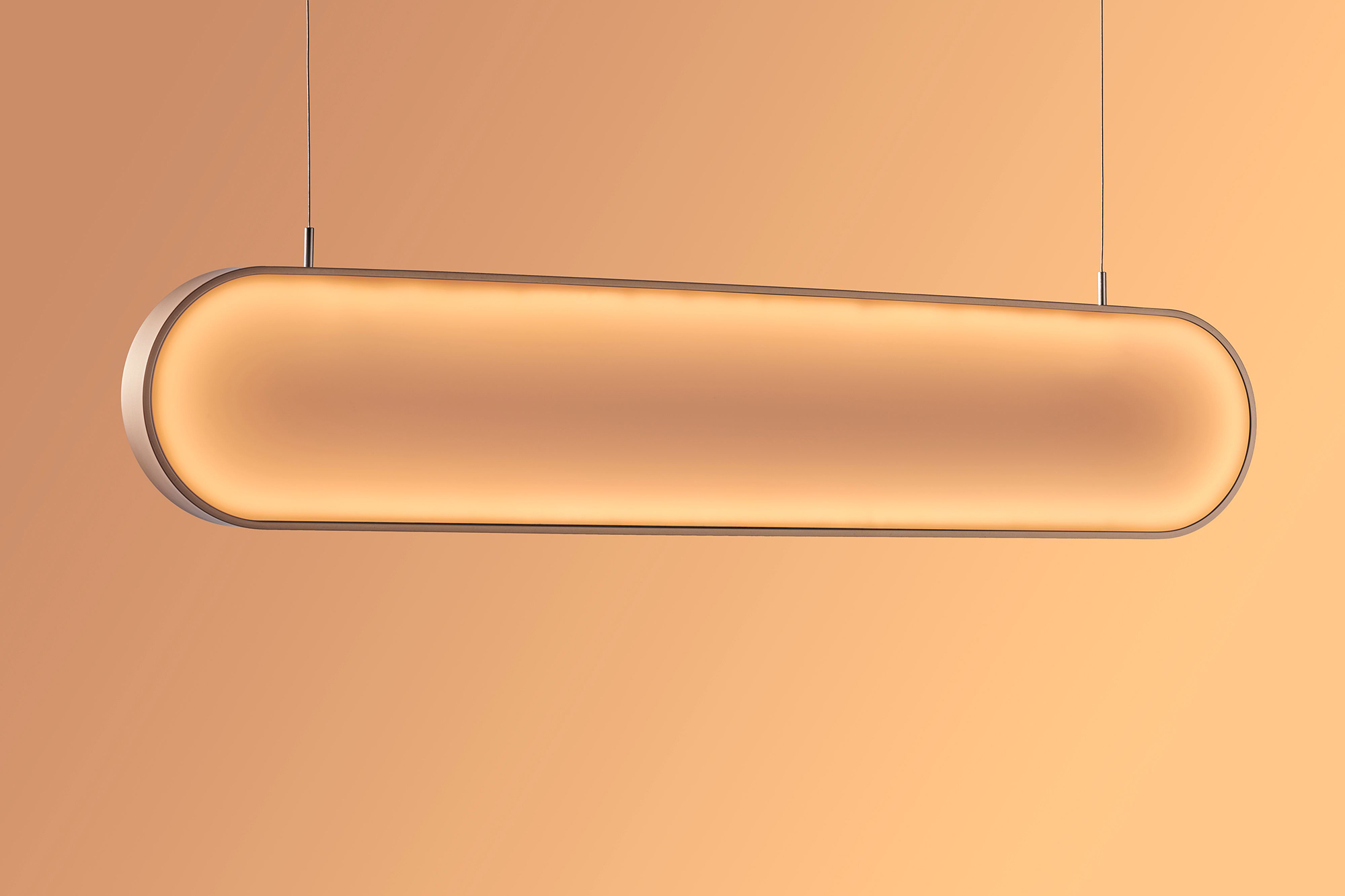
Chapter The Expo 2020 in Dubai falls under the title »Connecting Minds, Creating the Future«. What details can you share with us about your contribution to the Netherlands Pavilion?
Marjan van Aubel We were asked to supply the Netherlands Pavilion, designed by V8 Architects with energy, which is of course, an exciting project for us, especially because the pavilion is a great vision of how the future could be and could look like. For the Dutch Biotope that combines food, water and energy, we designed a solar-paneled roof that is made out of coloured transparent organic photovoltaics in collaboration with ARMOR ASCA®. They are made out of non-toxic materials and installed in a circular way, so they can be reused after the Expo. For us, it’s important to show that harvesting solar energy is not only a technical process, but can be beautiful and that’s what you’ll see in Dubai. When you stand in the pavilion, it feels like standing in a gigantic modern church with beautiful light reflections that come from the colorful solar panels on the roof. They harvest energy, but also provide shade and filter the right light spectrum for the plants growing inside the pavilion.
